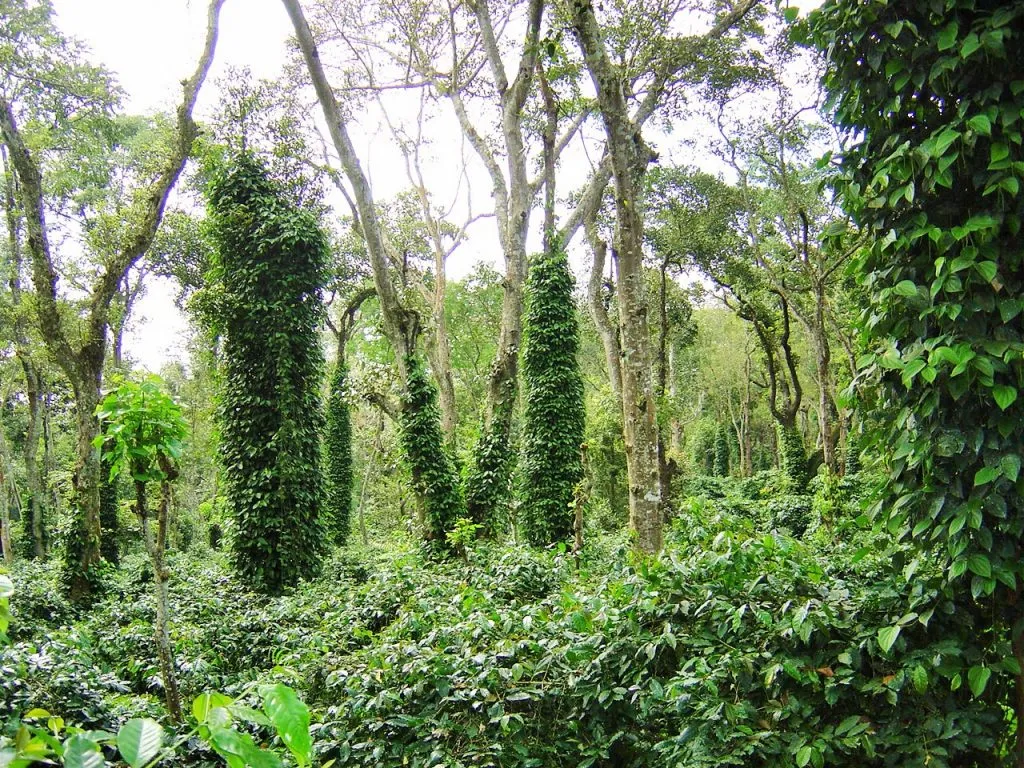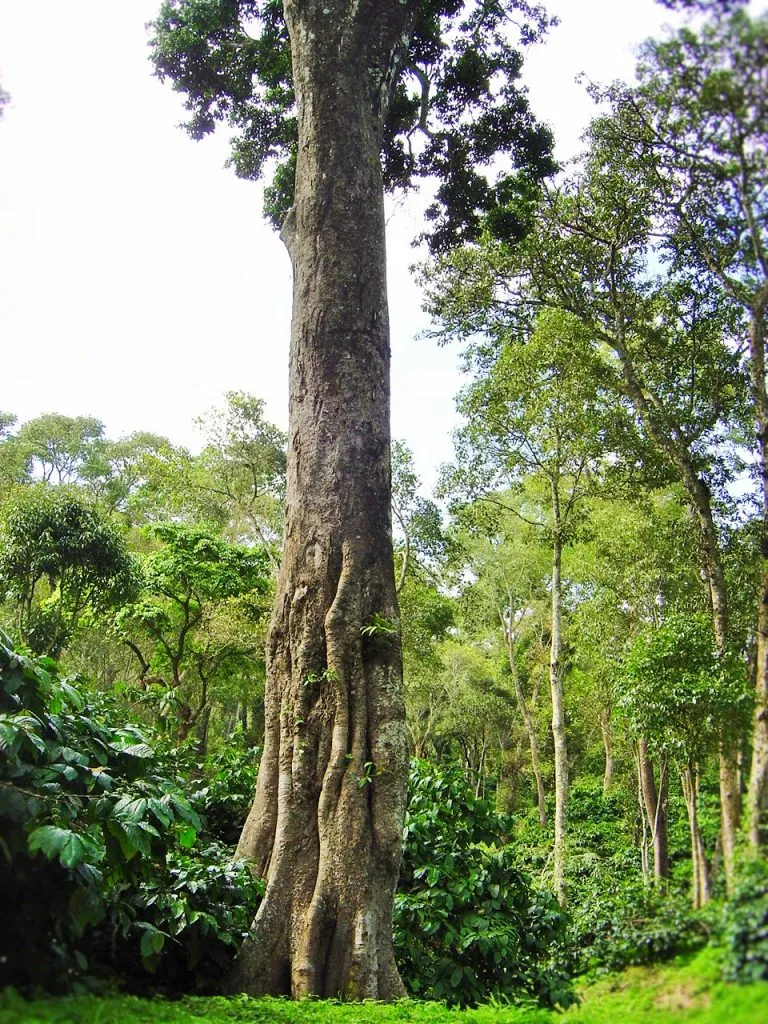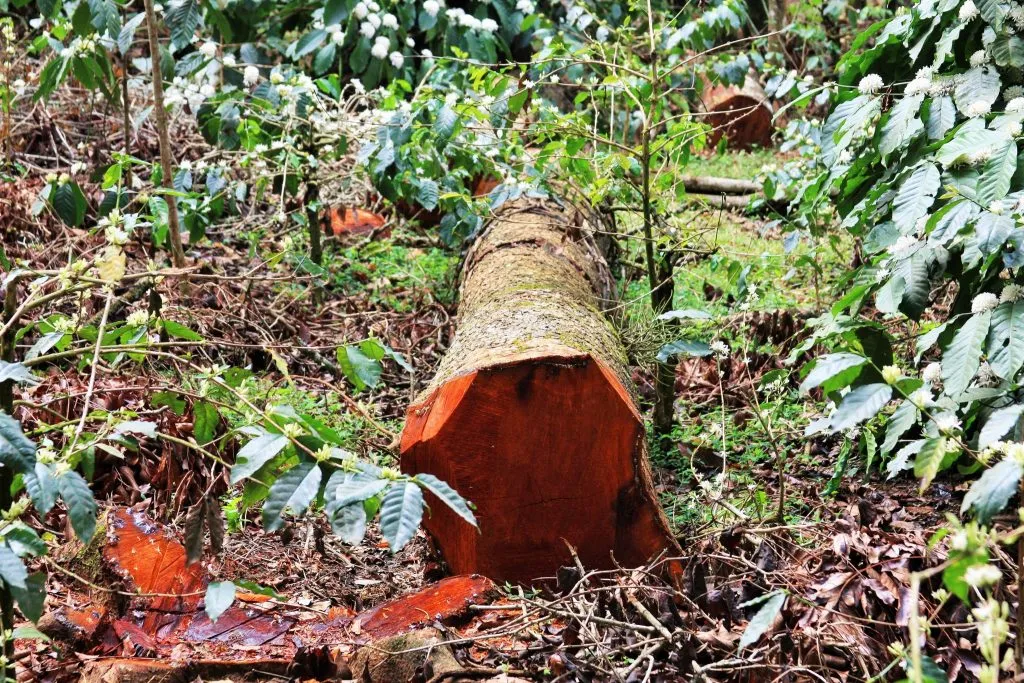by Dr. Anand Titus and Geeta N. Pereira
The area under coffee plantations in India has increased by more than three times, from 120.32 thousand hectares in 1960-61 to 397.147 thousand hectares in 2015-16. Most of this area is concentrated in the southern states of Karnataka (54.95%), Kerala (21.33%) and Tamil Nadu (8.18%).
Sustainability
Coffee farmers throughout the ages have played a vital role in protecting forests. They have practiced a sustainable system of agriculture that is economically sustainable and ecologically sound. The conservation of biodiversity is a part of coffee culture, embedded in and perpetuated by customs and religious beliefs. Their production systems encompass the sacred forests, and the scared habitants reaching down to the smallest creature and plant life. The local farmers have been the guardians of nature all these years.
Sustainable Systems
By and large, Indian Coffee is associated with forest grown coffee. Mechanization is to a bare minimum and when one visits the plantation one can see trees haphazardly arranged. The soil is virgin and no serious effort is made to mechanize the plantation for the sole purpose of retaining the sustainable Eco-friendly systems. The leaf litter from the trees acts like a sponge for the rainwater to absorb into the ground and this prevents runoff and soil erosion. This not only contributes to the soil fertility, but also protects the precious soil from weathering and other undesirable factors. Most coffee plantations are located in regions with average to heavy rainfall, yet even if there is a shower of 10 cm on one single day, there will never be runoff inside the plantation because of the thick mulch, which acts as a blotting paper, allowing the water to slowly percolate downward.

Parameters for growth
The Coffee bush requires ideal conditions in terms of elevation, temperature and moisture to perform to its potential.
Plantations generally require hot and humid climate with temperature varying between 15°C and 28 °C .Temperatures in excess of 30 degrees Celsius is detrimental for both growth and production. Ideal rainfall ranges from 40 inches to 85 inches. The Coffee bush is highly susceptible to extremes of low temperatures, frost, and hailstones. Prolonged drought is also injurious to coffee.
Trees and Soil
Each soil profile has a pivotal role to play in the quick establishment of trees. Clay dominated soils have much lesser extensive root system than soils that are sandy or well drained. Iron and aluminium rich soils help tall evergreen trees to establish faster and better. Sandy soils accommodate red and white cedars but can uproot other non-deep rooted species. Roots in sandy soils will be more extensive, less fibrous and fewer in number. Root systems are modified by their environment. Fertile Soils with good consistency, aeration and drainage harbour more numerous rots, less extensively spread and closer to the trunk than roots in less desirable soil.
Root to Shoot Ratio
Trees inside the Coffee ecosystem also face competition in terms of space for growth and limitation of nutrients from other crops and trees. Care needs to be taken such that each tree should have optimum space both below and above ground to grow and establish itself. Below ground space is required for establishment and expansion of root growth.
Scientific literature points out to the fact that the relative relationship of the root to the shoot is expressed as the ration of the weight of the root to the weight of the top. Under normal conditions, this ration is from 1/5 to 1/6, meaning that the top is 5 to 6 times as heavy as the roots. Another way to view the root system is to consider that a seedling may have 2 to 6 feet of root length while the root system of a mature tree may be hundreds of miles in length.
Many researchers and Scientists have elaborately studied the root system of trees, herbs and shrubs. Their findings state that at the point of attachment to the trunk of the tree, there are relatively few roots; these divide and re-divide, becoming progressively smaller in diameter until reaching the extremely fine rootlets. Roots have no regular branching pattern like the shoots which develop at nodes from buds in the axils of leaves. Lateral roots arise from tissue on the outside of larger roots. The root cap protects each root tip as it is forced through the soil by elongating tissue just behind the tip of the root. Just back from the root tip are the root hairs which are fine outgrowths of single cells. Water and nutrients are absorbed through root hairs and by the tips of these smallest roots. Root hairs are functional for a few weeks to two years and then are sloughed off.

Root Systems
Prevent soil erosion
Tough and hardy to overcome both drought and excessive waterlogging conditions.
The roots should help in better establishment of the sapling at a young age and become hardy to withstand the vagaries of nature.
The roots should be associated with beneficial microbes like “Mycorrhizae” and help in absorption of major and minor nutrients from the deeper layers of the soil and give it to coffee and multi-crops.
Species diversity
In recent years scientists have come across a number of new species, both plant and insect, inside shade coffee. Recent data have shown that there is a direct correlation between the structural complexity of a coffee plantation and the number of species that can be found there. The Agro forestry systems of shade coffee farms provides habitat for a great number of migratory and resident birds, reptiles, ants, butterflies, bats, plants and other organisms. Shade-grown coffee provides important habitat for both native and migratory bird species.
Qualitative Vs Quantitative Aspect
Ultimately the richness of the flora and fauna inside Coffee Forests is largely due to the quality of trees inside the forests. We emphasize that Coffee Planters are interested more in the quantitative aspect rather than focusing on the qualitative aspect of trees. The hardwood species which are time tested and efficient carbon mitigators are giving way to quick growing trees like Mangium, Acacia and Mesopsis. These newly introduced trees are turning the soil more acidic in nature and are leaving behind alkaloids that are difficult to biodegrade by microbes.

Conclusion
Climate change has affected the coffee forests in many ways. Torrential downpours or extended drought. High velocity winds and hail storms. It is our understanding that the right choice of trees planted in the coffee plantations will provide adequate safeguards to coffee, multiple crops and other forms of biodiversity. Shade grown eco-friendly coffee forests, in the earlier years had more number of quality shade trees resulting in stable microclimates, essential for sustainable yields. However, with the concept of less shade and more sun loving coffee, there can be no proper safeguard against temperature and humidity fluctuations caused by climate change, unless the right choice of trees is put in place.
References
Anand T Pereira and Geeta N Pereira. 2009. Shade Grown Ecofriendly Indian Coffee. Volume-1.
Bopanna, P.T. 2011.The Romance of Indian Coffee. Prism Books ltd.
Clarissa Pinkola Estés.1995. The Faithful Gardener: A Wise Tale About That Which Can Never Die
Nancy Beckham, ‘Trees: finding their true value’, Australian Horticulture, August 1991.
Sharon Beder, The Nature of Sustainable Development, 2nd edition, Scribe, Newham, Vic., 1996.
Introduction to the Indian Coffees
Cultivation of Coffee in India
Trees: finding their true value
Formula provides basis for tree appraisal
Americans are planting … TREES OF STRENGTH